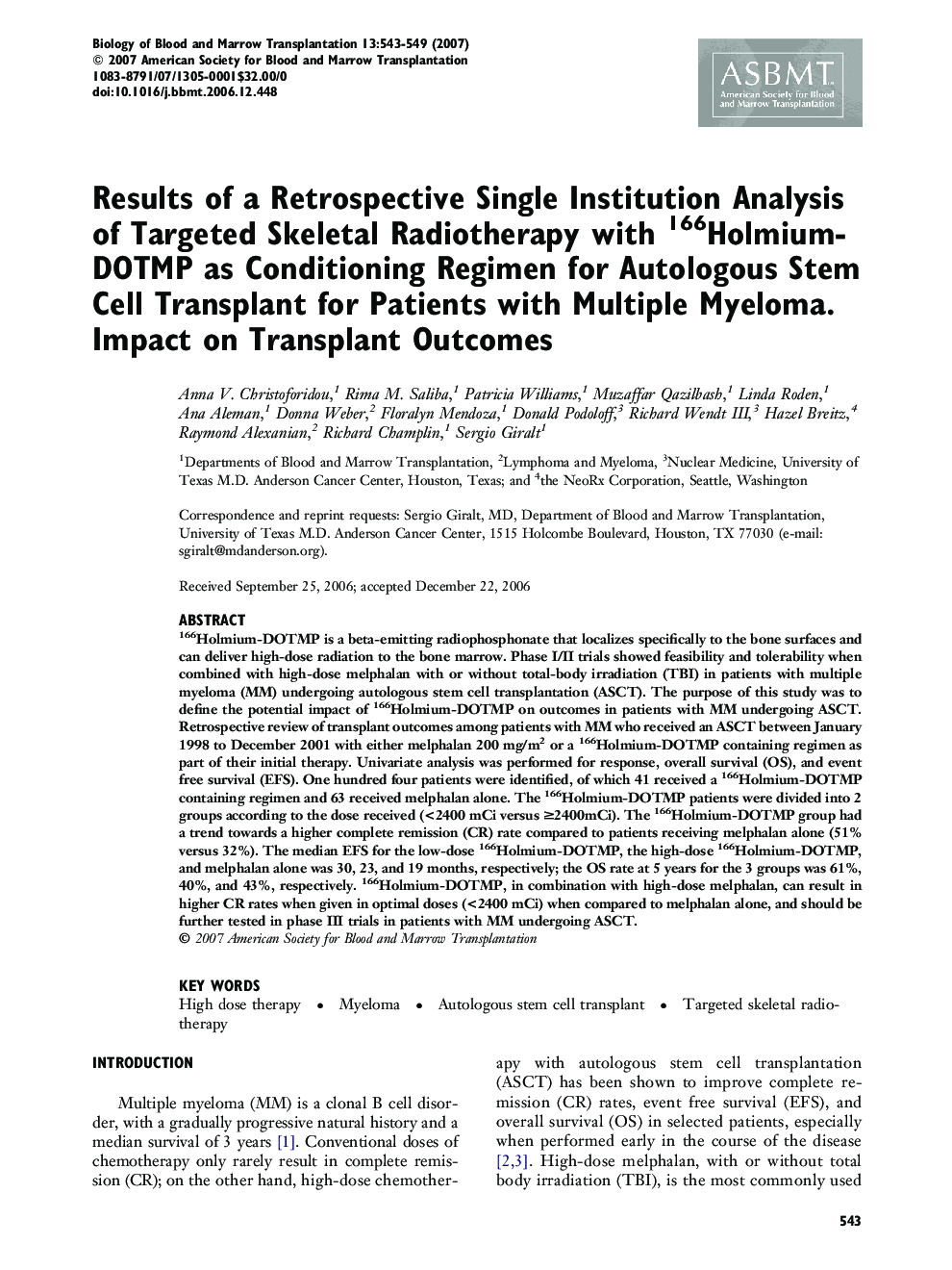| Article ID | Journal | Published Year | Pages | File Type |
|---|---|---|---|---|
| 2104911 | Biology of Blood and Marrow Transplantation | 2007 | 7 Pages |
166Holmium-DOTMP is a beta-emitting radiophosphonate that localizes specifically to the bone surfaces and can deliver high-dose radiation to the bone marrow. Phase I/II trials showed feasibility and tolerability when combined with high-dose melphalan with or without total-body irradiation (TBI) in patients with multiple myeloma (MM) undergoing autologous stem cell transplantation (ASCT). The purpose of this study was to define the potential impact of 166Holmium-DOTMP on outcomes in patients with MM undergoing ASCT. Retrospective review of transplant outcomes among patients with MM who received an ASCT between January 1998 to December 2001 with either melphalan 200 mg/m2 or a 166Holmium-DOTMP containing regimen as part of their initial therapy. Univariate analysis was performed for response, overall survival (OS), and event free survival (EFS). One hundred four patients were identified, of which 41 received a 166Holmium-DOTMP containing regimen and 63 received melphalan alone. The 166Holmium-DOTMP patients were divided into 2 groups according to the dose received (<2400 mCi versus ≥2400mCi). The 166Holmium-DOTMP group had a trend towards a higher complete remission (CR) rate compared to patients receiving melphalan alone (51% versus 32%). The median EFS for the low-dose 166Holmium-DOTMP, the high-dose 166Holmium-DOTMP, and melphalan alone was 30, 23, and 19 months, respectively; the OS rate at 5 years for the 3 groups was 61%, 40%, and 43%, respectively. 166Holmium-DOTMP, in combination with high-dose melphalan, can result in higher CR rates when given in optimal doses (<2400 mCi) when compared to melphalan alone, and should be further tested in phase III trials in patients with MM undergoing ASCT.
